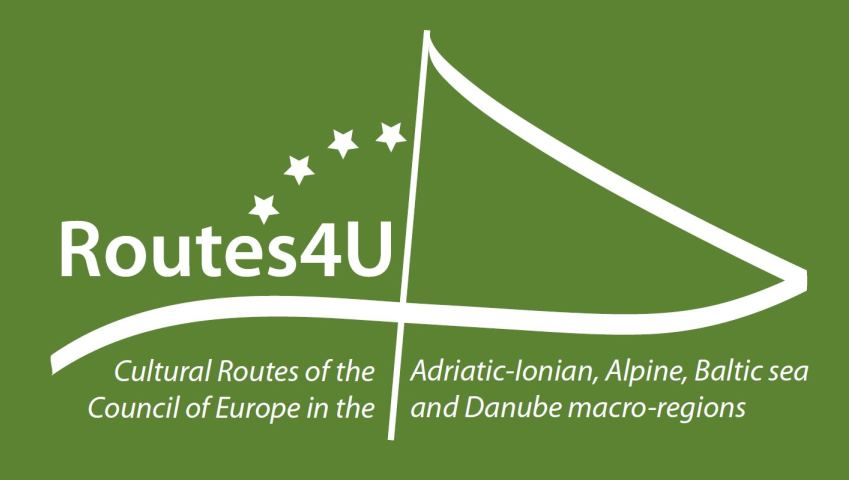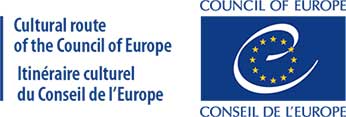The Routes4U interviews are an invitation to get to know the different stakeholders responsible for the implementation of the 2017-2020 Joint Programme between the European Union and the Council of Europe. In this first interview, we invite Stefano Dominioni, Executive Secretary of the Enlarged Partial Agreement on Cultural Routes, to give his views on the Cultural Routes of the Council of Europe Programme and insights regarding the objectives of this new Grant Agreement with the European Union.

Executive Secretary of the Enlarged Partial Agreement (EPA) on Cultural Routes
Director of the European Institute of Cultural Routes (Luxembourg)
Stefano Dominioni is responsible for the implementation of the strategy of the Cultural Routes of the Council of Europe programme as defined by the 31 EPA Member States. He is responsible for overseeing the certification awarded by the Council of Europe of cultural route projects and the evaluation of the current 31 networks already certified. He is in charge of strengthening cooperation with International Organizations stakeholders, such as the European Union, UNESCO and UNWTO.
First of all, could you tell us what the Cultural Routes of the Council of Europe represent for you?
The Cultural Routes of the Council of Europe programme is a fascinating programme connecting European culture, its history and people through space and time.
The Programme provides a unique reading of Europe as a continent of shared history, traditions and cultural heritage, representative of our cultural diversity in a spirit of constant intercultural dialogue. The programme represents the opportunity for our citizens to participate in the heritage of a wider Europe, which includes the 47 Member States of the Council of Europe. The Cultural Routes Programme, celebrating its 30th Anniversary, presents European history under a variety of fascinating themes and perspectives: arts and architecture, history and religious traditions, European landscapes, as well as important historical figures who have marked the history of our continent.
Definition: The Cultural Routes of the Council of Europe are an invitation to travel and to discover the rich, diverse and shared heritage of Europe by bringing people and places together. The networks certified “Cultural Route of the Council of Europe” implement in at least three European countries innovative activities pertaining to five main priority fields of action: co-operation in research and development; enhancement of memory, history and European heritage; cultural and educational exchanges for young Europeans; contemporary cultural and artistic practice; cultural tourism and sustainable cultural development.
How does the Cultural Routes model contribute to democratic societies?
There is a very strong democratic dimension connected to the implementation of the Cultural Routes of the Council of Europe: each of the 31 routes is in fact managed by an association or federation with members (municipalities, local and regional authorities, museums, foundations, etc.) present in the various countries concerned. Routes are based on democratic principles of participation, governance, access to information and sharing of experiences. The Cultural Routes are decentralised networks managing their own programme of activities and financial resources, embodying the articles of the Faro Convention (Council of Europe, 2005). They provide wider access to culture for citizens, promoting less-known destinations and local participation.
Could you tell us your experience with the European Commission (DG REGIO) during the negotiating process of the Grant Agreement “Fostering Regional Development through Transnational Cultural Routes, Heritage Policies and Practices” (aka Routes4U)?
The Cultural Routes Programme foster regional development through its members at local and regional level, through sustainable European networks of history, art and landscape worth exploring, particularly in less known destinations. Both these topics and localities fit very well with the mission and activities promoted by the Directorate General for Regional and Urban Policy (DG REGIO) of the European Commission. This is the largest grant agreement concluded so far between the Council of Europe and the European Union for the Cultural Routes programme, and the first with DG REGIO. During the negotiations concerning project objectives and expected outcomes, we were able to take on board many ideas put forward by the European Commission and the four EU macro-regions on the role of cultural heritage in fostering regional development.
Cultural Routes are transnational regional networks which can act as privileged vectors for the promotion of socio-economic growth in the Danube, the Baltic Sea, Alpine and Adriatic-Ionian macro-Region.
What do you think are the main challenges of the 2017-2020 Joint Programme?
We are aiming at a very concrete, result-oriented joint programme, including policy new guidelines for the regions, a digital platform, a Cultural Routes travel card, Cultural Routes branding for goods and services along the routes, but also small grants to be awarded directly to the Routes through calls for tenders. With the help of the macro-Region coordinators we have also identified new project proposals in order to extend the presence of Cultural Routes, and develop new cultural routes in the four macro-regions. Among the challenges, I would say that the most relevant will originate from the fact that the programme will need to manage a complex, multi-level architecture, involving four macro-regions, several countries, regions and Cultural Routes. Our experienced and dedicated staff is ready to work extremely hard to achieve all expected results! Besides concrete results planned for each macro region, the programme will produce some transversal, cross-cutting activities and products, that we will implement in pilot macro-regions and then expand to all four through future cooperation.
In conclusion, can you reflect on the achievement and future challenges of the Cultural Routes of the Council of Europe programme?
Our overall programme strategy is to continue strengthening and expanding the 31 Cultural Routes of the Council of Europe, but also helping new projects develop and foster our presence to achieve wider geographical and thematic coverage across all 47 member States of the Council of Europe, and beyond. 2017 marked the 30th anniversary of the Cultural Routes programme. This year we will celebrate the 20th anniversary of the European Institute of Cultural Routes, the programme’s technical agency set up thanks to an agreement with the Grand Duchy of Luxembourg in 1998, and today headquarter the EPA on Cultural Routes. Thanks to the support of all our stakeholders, EPA Member States, the Grand Duchy of Luxembourg, the European Union and the Cultural Routes of the Council of Europe, the programme has now established itself as an essential grass-roots contribution to the protection and promotion of European history and culture, connecting European citizens through heritage.
More information
- Routes4U Project: www.coe.int/routes4u
- Faro Convention: https://www.coe.int/fr/web/culture-and-heritage/faro-convention
- EU macro-regions
- Adriatic-Ionian: www.adriatic-ionian.eu
- Alpine: www.alpine-region.eu
- Baltic: www.balticsea-region.eu
- Danube www.danube-region.eu




